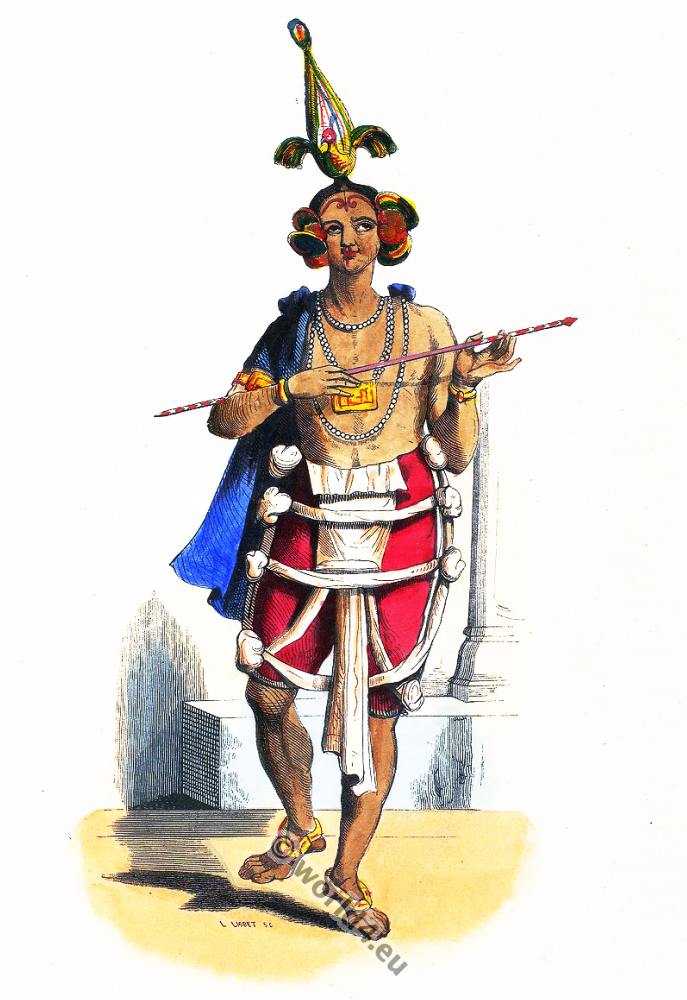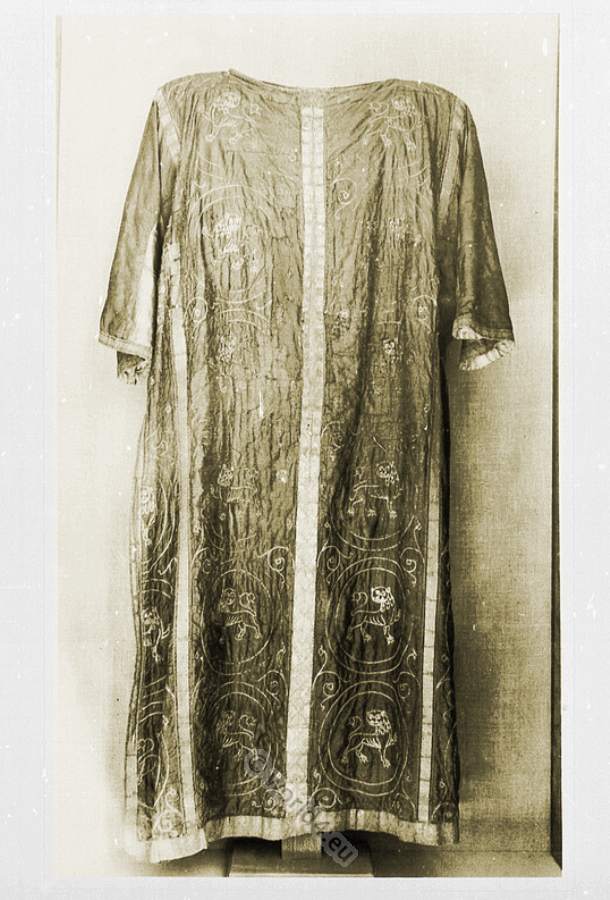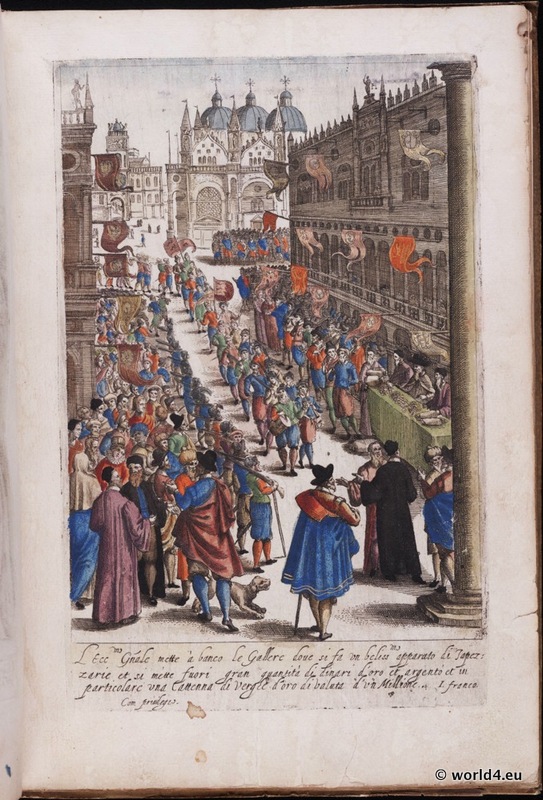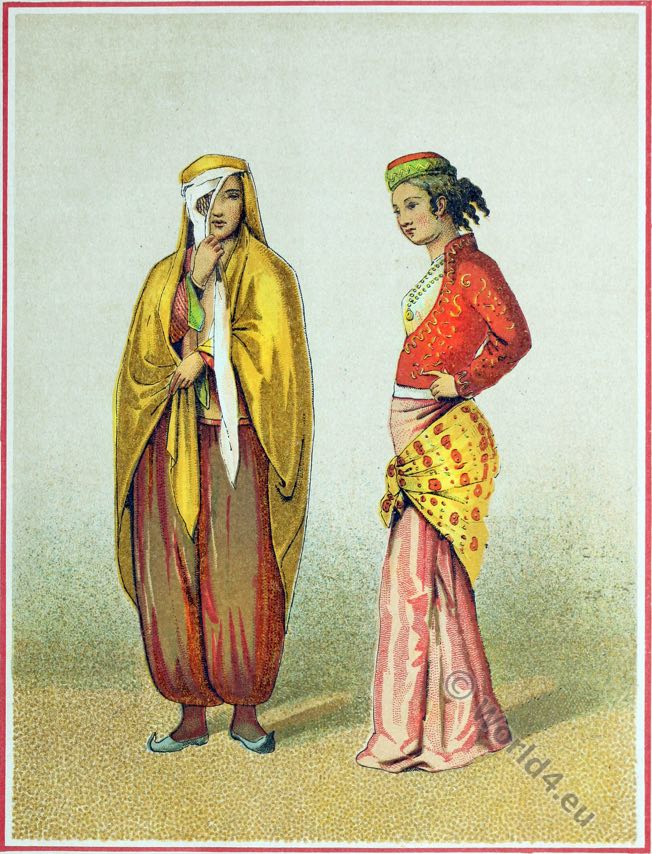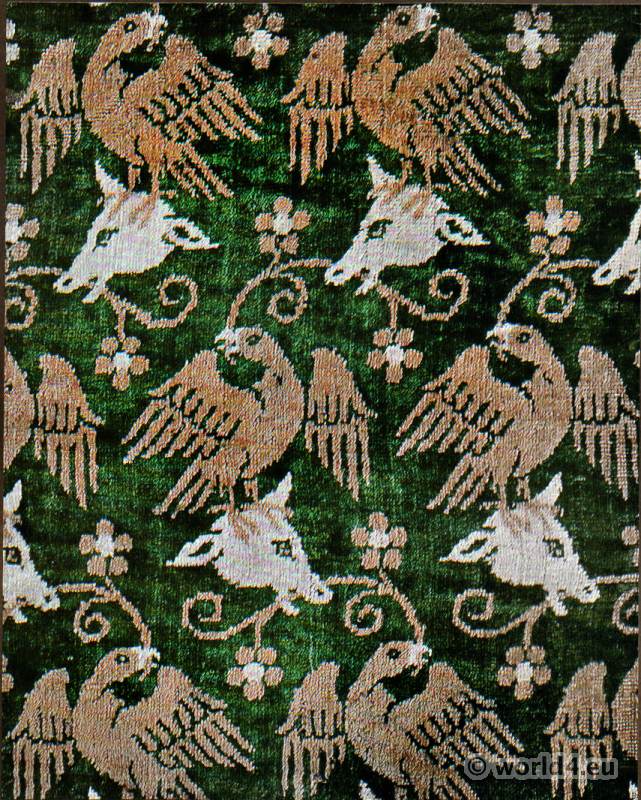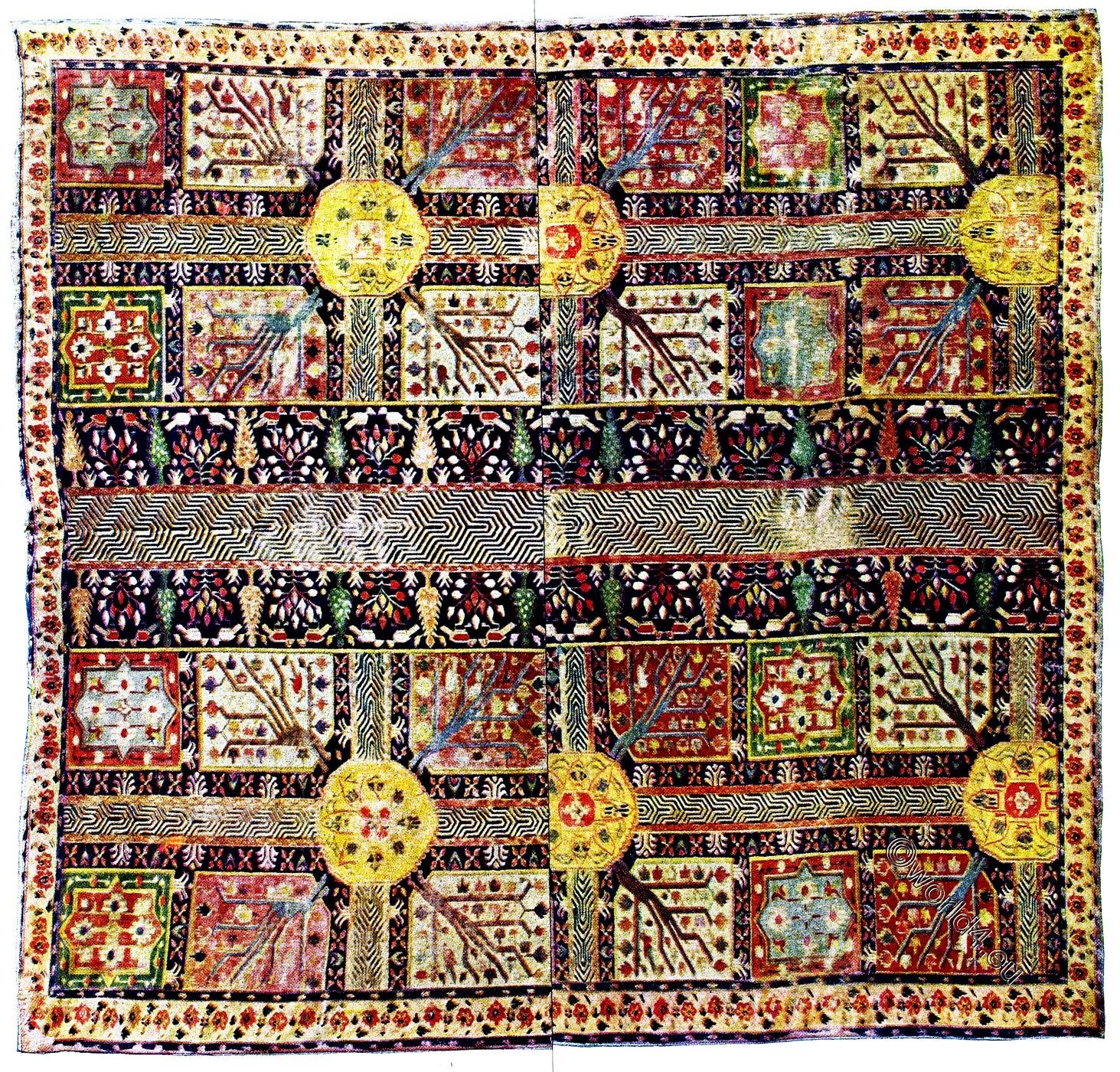Persian dancer and musicians in the 16th century.
Musicians in persian costumes with traditionell music instruments; The Dotar (3rd f.l.), a long-necked lute that is played in Iran and Afghanistan; The Rebab, Kemāncheh (1st f.r.), with simple round sound body and usually two or three strings, was one of the most important stringed instruments of the Middle Ages; The Sornay (2nd.f.r.), is a term for conical instruments with single dual reed. In Persian music Sornay is played together with the drum dohol especially in folk music Lorestans. In Afghanistan, this means wind instrument Sorna, Kashmir surnay or swarnai. The Daira (1st.f.l.) is a frame drum with or without clamps; The Tombak (2nd.f.l.) is a wooden goblet drum, which is the most played percussion instrument in Persian folk music and classical Persian music in Iran.
The musicians wear the calpac on a high, sometimes pointed, truncated conical or cylindrical cap mainly of fur or felt, sometimes both. The Colpak is a military variation of the calpac worn by the light cavalry, especially the hussars. The Kolpik called a fur hat that is worn by family members of the Chassidic rabbi. They wear the Entari or Dolaman, moreover the caftan. Under the Entari a long undershirt and long baggy trousers were worn, which were due to close on the lower legs.
In the lower part of the image three Persian dancers and a servant in the typical costumes are shown.
The average dancer wearing a precursor of Raqs Sharqi belly dance costumes. The belly dancing was not invented until the early 20th century and is considered a fancy dance, such as the typical veil dance of Salome. The typical belly dance costume came about in the 1920s in the cabarets in Algiers, Beirut and Cairo. The term “belly dance” probably comes from the French “danse du ventre”.
French writers such as Émile Zola and Gustave Flaubert called it the oriental dance, Flaubert had met on his travels to the Orient.
Due to the large number of ethnic groups in Persia each ethnic group had its own folk dances. In general, the dances as Raqs-e-Ruhozi (entertainment dances), Raqs-e Kodschor, Raqs-e Tehrani were called. The Ruhozi dances are divided into six categories: the Shaateri, the Raqs-e Sang, the Raqs-e-Matt Raqs-e Nashtari, the Raqs-e Gilaz and the Djaheli. Facial expression is extremely important in all entertainment dances. The technical mastery of the particular dance occurs after the expression, in the assessment back. The name of the court entertainers dancers and musicians was Motreb. Later it became a dirty word and will, except in Egypt, used as such.
Source: ‘Le Costume Historique’ by Auguste Racinet. Lithographed by Chataignon for Firmin Didot. Paris 1876-1888
Related
Discover more from World4 Costume Culture History
Subscribe to get the latest posts sent to your email.


